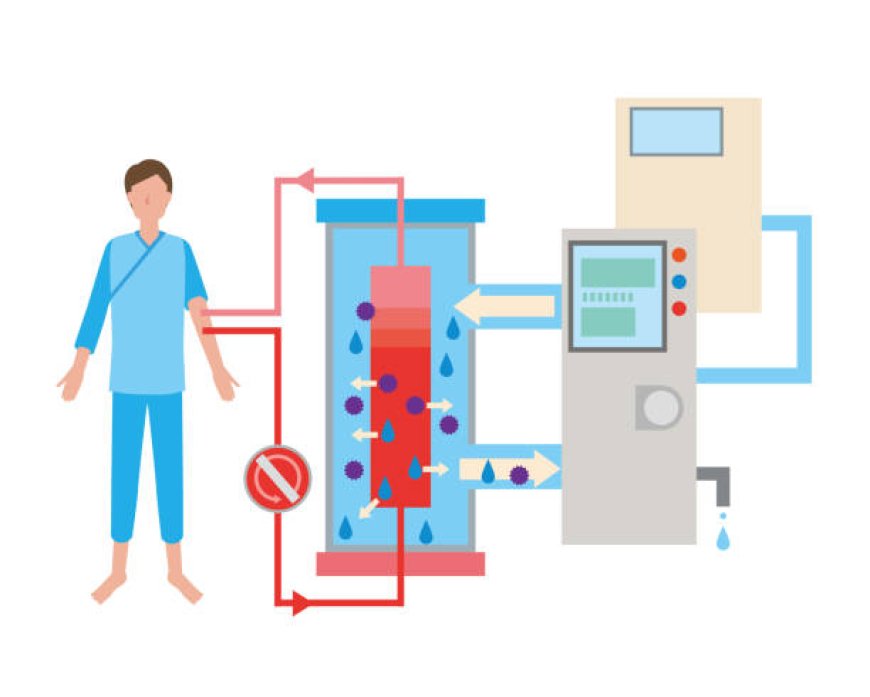Setting Up Home Hemodialysis: A Beginner’s Guide
A step-by-step beginner's guide to safely and confidently setting up home hemodialysis.

Managing kidney failure can feel overwhelming, but home hemodialysis offers patients more control, flexibility, and freedom. For many, transitioning from a dialysis center to home treatment improves quality of life. However, setting up for home dialysis involves planning, learning, and making your space ready for medical care.
This beginners guide will walk through the essential steps of preparing for home hemodialysisfrom selecting equipment to understanding training requirementsso patients can feel confident and safe at home.
Understanding Home Hemodialysis
What Is It and Who Can Do It?
Home hemodialysis is a treatment where patients clean their blood at home using a dialysis machine, rather than visiting a dialysis clinic several times a week. This type of treatment is typically recommended for people with end-stage renal disease who are stable, motivated, and willing to learn how to manage dialysis themselves or with the help of a care partner.
Unlike traditional in-center dialysis, which is done three times a week, home dialysis can be more frequentleading to fewer fluid restrictions, improved energy, and better overall health outcomes. It empowers patients to maintain a routine that works for their personal and professional lives.
Before starting, patients undergo medical assessments to determine if home dialysis is a good fit. Factors include physical ability, willingness to learn, home environment, and support systems.
Preparing Your Home Environment
Creating a Safe and Comfortable Dialysis Space
Setting up a suitable space for home hemodialysis is crucial. The area should be clean, well-lit, and near a water source and electrical outlet. Many patients choose a dedicated room or corner in their bedroom or living room.
The space should also have:
-
A sturdy chair or recliner for comfort during sessions
-
Storage cabinets for medical supplies and disposable materials
-
Temperature control to keep the patient and machine within a safe operating range
-
A sink or water access for hand hygiene and cleaning
Some homes may require minor modifications, like plumbing changes or new power outlets, to support the dialysis machine. These changes are usually discussed during initial training and home assessments by the dialysis provider.
A quiet and comfortable space also helps reduce anxiety and stress during treatment. Its helpful to make the environment patient-friendly with personal touches like music, books, or TV.
Equipment Youll Need
Dialysis Machine and Supplies
Once your space is ready, the next step is installing the equipment. The most important piece is the home hemodialysis machine, which filters the blood and removes waste and excess fluids. Your healthcare team will provide this machine along with a water treatment system if needed.
Other essential supplies include:
-
Dialyzers (artificial kidneys)
-
Bloodlines and tubing sets
-
Sterile needles and syringes
-
Antiseptic wipes and gloves
-
Saline solutions and emergency medications
Supplies are typically delivered monthly and should be stored in a clean, dry area. A nurse or technician will show you how to check expiration dates and organize materials for ease of use.
Understanding how the equipment works is vital. Youll be taught how to set up the machine, prepare your arm access, and monitor for alarms or unusual signs during treatment.
Training and Support
Learning to Dialyze at Home
Before beginning home hemodialysis, patients go through an intensive training program, usually lasting a few weeks. During this time, nurses and technicians teach patients how to:
-
Operate the dialysis machine
-
Manage vascular access (fistula or catheter)
-
Prevent infections
-
Respond to machine alarms
-
Handle complications such as low blood pressure or cramping
A care partnerusually a family member or friendis often involved in training to assist during sessions. However, some patients choose to dialyze solo if their health team approves.
Ongoing support is provided through regular clinic visits, remote monitoring, and 24/7 emergency assistance. Resources like home hemodialysis guides and educational materials help patients stay informed and confident in their care.
Training also focuses on building routine, documenting treatments, and recognizing when to seek help. With time and experience, many patients become highly skilled and self-sufficient in managing their care.
Common Concerns and How to Overcome Them
Addressing Safety, Infection Risk, and Lifestyle Impact
Starting home hemodialysis comes with concernssafety, cleanliness, and emotional readiness are common worries. Patients often ask:
-
What if something goes wrong?
-
How will I keep everything sterile?
-
Can I still travel?
These concerns are valid. However, with proper training and support, most challenges can be managed. Dialysis centers provide checklists and safety procedures to follow, and emergency kits are kept at home for added peace of mind.
Home dialysis can also fit into daily life more easily than center-based treatment. Many patients schedule sessions in the evening or overnight to maintain a normal workday. For travel, portable machines and travel assistance programs make it possible to take dialysis on the road with minimal disruption.
Emotional support through counseling or patient groups helps reduce anxiety and build confidence. Over time, many patients report feeling empowered by managing their own care.
Final Thoughts
Home hemodialysis is a life-changing option that offers greater freedom and flexibility to kidney patients. Though the setup process may seem daunting at first, thorough training, support from healthcare providers, and a well-organized home environment can make it a safe and manageable part of everyday life.
Each patients journey is unique, but many who switch to home dialysis find improved well-being and independence. With the right tools, preparation, and mindset, home treatment becomes not just a medical taskbut a pathway to a better quality of life.

































